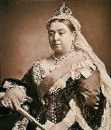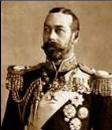|
COLONY & PROTECTORATE OF SOUTHERN NIGERIA
1901 Proposed Banknote PROOFS
Southern Nigeria is not a country listed in any coin or banknote numismatic catalogs. If you also collect postage stamps, you can find stamps for this colony
issued from 1901-1913. Thanks to an avid banknote numismatic researcher,
The Colony
and
Protectorate
of Southern Nigeria has now been listed in the
Numismondo World Paper Money Picture Catalog. Our
listing above includes 12 different Proof banknotes and the original correspondence between Mr. Thomas DeLaRue, Director of the printing company and
Southern Nigeria High Commissioner, Sir Walter Egerton K.C.M.G. who was resident in Dorchester, England. Egerton never took office in Lagos as he had an acting High
Commissioner, James Jamieson Thorburn, resident in Southern Nigeria. Nigeria is not a country listed in any coin or banknote numismatic catalogs. If you also collect postage stamps, you can find stamps for this colony
issued from 1901-1913. Thanks to an avid banknote numismatic researcher,
The Colony
and
Protectorate
of Southern Nigeria has now been listed in the
Numismondo World Paper Money Picture Catalog. Our
listing above includes 12 different Proof banknotes and the original correspondence between Mr. Thomas DeLaRue, Director of the printing company and
Southern Nigeria High Commissioner, Sir Walter Egerton K.C.M.G. who was resident in Dorchester, England. Egerton never took office in Lagos as he had an acting High
Commissioner, James Jamieson Thorburn, resident in Southern Nigeria.
Southern Nigeria (1900 - 1914) was a British Protectorate formed by
amalgamating the
Niger Coast Protectorate with
territories
chartered
by
the
Royal Niger Company below
Lokoja
on the
Niger
River. The
Lagos colony was later added
in 1906 and the territory was
officially
renamed the Colony and Protectorate of Southern Nigeria.
(1)
The British pound sterling
was the official currency of the new colony. It has been
reported in several publications that the British West African pound was used in
Southern Nigeria from 1913-14,
however, the West Africa Currency
Board did not begin issuing their banknotes until 1916, it is there for
assumed that the British
pound continued use until
1916.
The Colony used the
BWA Pound from 1916 - 58 with the
exception of an emergency WWI issues by the Nigeria Government in
1918. The
Nigeria Pound-Naira began in
1958 and continues today.
In 1909,
the researcher found a proposal to Introduce a new currency for
the Southern Nigeria
Colony &
Protectorate. An order was given to British
banknote printing
 company De La Rue.
The result of the proposal for these new banknotes consists of a 2 page letter from the
Director of
De
La Rue, company De La Rue.
The result of the proposal for these new banknotes consists of a 2 page letter from the
Director of
De
La Rue,
addressed to Sir
Walter Egerton K.C.M.G,
Governor
of Southern Nigeria (1904 - 1912), explaining
the details
of the proposed
notes for Southern Nigeria. It contained the designs of front and
back of all
proposed
denominations, with additional different
back designs, example of
underprint and watermark papers in different
colors.
In total there are 20 items
contained in this lot and
becomes a full set
with letter and all the contents, as
mentioned in the letter,
without any missing items.
From the correspondence it appears that the five denomination set
of banknotes was in an advanced stage of development. It was
awaiting
approval of the reverse designs from several possible
submitted designs which included a hippopotamus with its mouth
wide open, a hippo side view and some various colour features.
During this period of banknote history there was not much in
terms
of security features except for watermarks.
TdlR proposed a new "protective overprint....guarding them
against forgery by photography
or direct transfer to stone."
They also included 5 different coloured papers with watermark
for consideration.
Mr. DeLaRue requested a
fee
of ₤635 to perform the
engraving of the plates - a paltry sum in today's terms! It was
very interesting to read all of the original
correspondence and to see the resulting designs, none of which would ever
materialize into issued banknotes.
This proposal never got beyond the proposal stage because of
disputes between the Colonial government and the Treasury over the silver
signorage privileges
enjoyed by the British Bank of West Africa.
In 1916 the British West Africa Currency Board issued its first banknotes
obviating the need for Southern Nigeria
banknotes, with these PROOFS languishing in the vaults of De La Rue for over 100
years before discovery. All the items are original and certified
by PCGS with
grades ranging from 58 AU to
64 UNC. These are 100+
years old,
directly from the archives of the printer.
There
is no
information
found or recorded anywhere about this proposal and
none
of the paper
money catalogs list
a country called
SOUTHERN NIGERIA.
"This lot
represents a missing numismatic history and is clearly a national Nigerian
treasure" as stated by the researcher.
We gratefully acknowledge Ramkumar for submitting
these original images and the
wonderful historic story surrounding their preparation.
6.8.2016 GSE |




































![]()